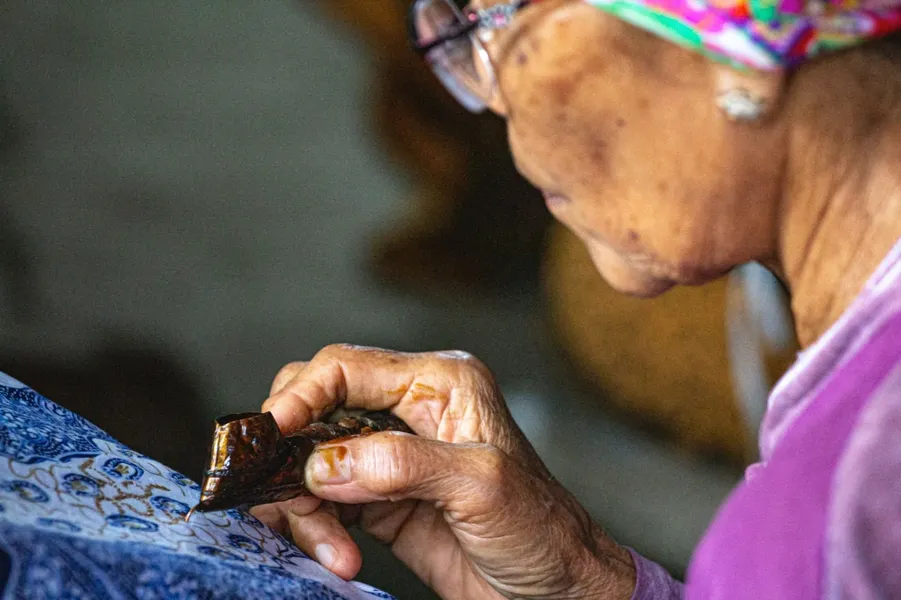Indonesia is a country rich in culture, and one of its most famous legacies is the art of batik. Batik is a unique textile art, producing cloth with beautiful patterns through various stages of complicated artistry. This article will discuss batik textile craftsmanship, which has become an essential part of Indonesian culture.
The Batik Textile Craftsmanship
Before making batik, many preparations must be made to ensure a smooth production process. These preparations include preparing tools, the workspace, and the materials used. Following are the steps in making genuine batik traditionally.
1. Materials and Tools Used

The process of making batik begins with selecting the basic fabric material. The most commonly used fabrics are cotton, silk, or rayon. The tools used in the batik-making process include hot wax, canting, and various molds for patterns. Applying hot wax on fabric precisely requires using a specialized tool called canting.
2. Designing Patterns

The next stage of making batik textiles begins with designing patterns. This pattern can be a traditional motif, modern, or even personal creativity. Once the pattern is complete, the next step is to apply hot wax to the fabric using a canting. This wax serves to shield specific fabric sections from dye exposure.
After applying the wax, the cloth is submerged in the dye. Usually, natural materials like wood dust, herbs, and roots are used to make this dye. The colors used in batik reflect Indonesia’s natural wealth. The fabric is then dried in the sun, and the dyeing process is repeated to achieve the desired color.
3. Re-staining and Wax Removal Process

The fabric is dipped in a different hue at the next step to produce a stunning contrast in the design. The cloth is dried after dyeing, and then the wax is removed. Melting the hardened wax on the fabric by heating it up or boiling it is how wax removal is done.
4. Finishing Process

After the wax is removed, the batik cloth must undergo several final stages. One of them is finishing, which involves cutting the edges of the fabric and sewing the frame so that the fabric is ready for use or sale.
How to Make Stamped Batik?

Unlike written batik, stamped batik requires simpler tools and processes to create. The difference between how to make stamped batik and how to make written batik lies in how to make the motif.
Since the method of making batik involves using a large stamp that has been given a motif, stamping batik does not require the process of creating a motif. The normal size of the stamp is 20×20 cm.
The following is how to make stamped batik:
- Lay the mori cloth on a flat surface.
- Heat the wax using a special baking pan for stamping batik. Place the baking sheet on the stove.
- Dip the canting stamp into the wax, then stamp it onto the cloth. Press firmly so that the wax seeps into the pores of the fabric.
After practicing how to make written batik and stamped batik above, you can use the batik cloth you create for various objects. Fabric can be made into various types of materials, such as women’s batik clothes or accessories.
Batik is not just a cloth but also a cultural heritage that must be preserved. Now you know about the batik textile craftsmanship process. Share this information with your friends as well.
